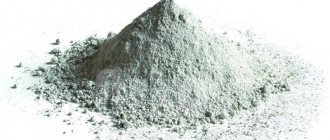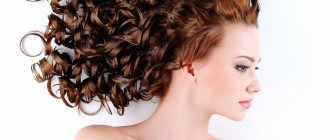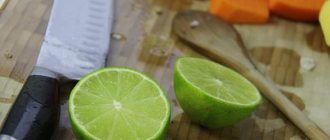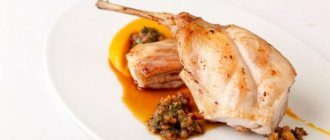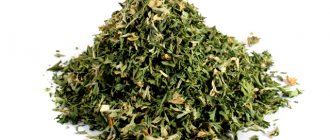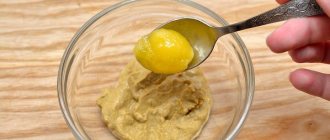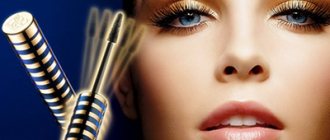Photo
What kind of oregano plant is this can be seen in the photo.
In what quantities to take, are there any restrictions?
In addition to the widespread use of oregano in food (including in the form of spices), the plant is also used in the form of decoctions because it has healing properties. Men should limit the intake of the herb internally; it is necessary to avoid the drug altogether if there are contraindications.
Important ! Children and pregnant women are prohibited from consuming oregano.
Is it possible every day?
You can take oregano decoctions daily if there are no contraindications.
Can I drink it like regular tea?
You can use a decoction of oregano as tea only if there are no contraindications. It is not advisable for children and men to consume grass.
Do I need to pre-treat?
If you need to make a decoction directly from fresh leaves, then rinse them well under running water. Fresh herbs can be stored in a container of water. The water must be changed every day; this mixture can be stored for no more than two weeks. Freshly cut plants can be chopped and frozen .
What time of day is it best to consume it, is it acceptable on an empty stomach?
Use oregano at any time of the day. It can be used on an empty stomach; for the prevention and treatment of certain diseases, it can be taken before meals.
Use in cooking
Oregano is used everywhere in cooking, but mostly in the Mediterranean countries. In Russia, tea is prepared using it; in Rus', it was customary to treat guests to kvass with oregano. In the Caucasus, the spice is used for pickling vegetables and mushrooms.
What dishes are they added to?
Oregano seasoning has won the approval of many famous chefs. Without this spice it is impossible to imagine Italian, Greek, French cuisine. It goes well with legumes (beans, peas, lentils) and can brighten up the taste of peas and bean soup.
Dry oregano is best suited for meat; it harmonizes with beef, pork, lamb, and chicken. It is added to minced meat for cutlets or homemade sausages. It is also used to complement dough for baking bread or sweet rolls.
The French prepare the famous ratatouille with the addition of spices, which bring out the taste of stewed and baked vegetables in a special way. When fresh, it is added to salads and dessert dishes based on fruits and berries, and served with cheeses.
Oregano goes well with tomatoes, champignons, potatoes, hot cheese dishes, fish and seafood (usually used for baking), egg and cottage cheese dishes - casserole, omelet.
In Italy, the spice is an indispensable component in the recipes of pasta, pizza, lasagna, ravioli, and ham. It is added to salads, sauces and light cold snacks.
What spices does it go with?
Along with oregano, the use of other herbs and spices requires culinary knowledge and experience due to the specificity of the first. So, for example, it’s bad with garden herbs - dill and green onions, as well as turmeric. The spice harmonizes well:
- with rosemary;
- basil (best with lemon and green);
- thyme;
- black, white, allspice;
- tarragon;
- celery;
- bay leaf;
- mustard seeds.
What to replace
It is difficult to achieve identical taste in a culinary composition, but if the spice is missing, you can replace oregano in the recipe with one of the following spices:
- marjoram (a garden type of spice) is a universal option, suitable for all dishes that contain oregano in the recipe;
- thyme - when preparing meat and legume dishes;
- a mixture of peppermint and dried basil - when preparing pasta and pizza.
An alternative to adding spice to a Greek salad is dried marjoram or fresh basil.
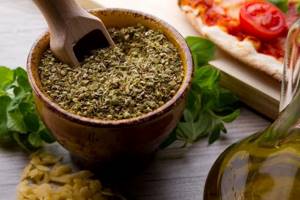
Features of use
Oregano is a very aromatic herb; when used in large quantities, it can “eclipse” the natural taste of a dish.
The spice should be added no earlier than 5-7 minutes before the end of cooking, because prolonged heat treatment destroys its beneficial properties.
Before using fresh oregano, it is preferable to tear it with your hands rather than chop it with a knife, so the essential oils in the plant evaporate more slowly and the oregano will impart all its aroma to the dish.
Use in folk medicine
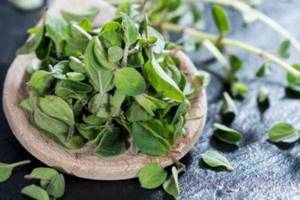
Oregano, which is also called motherwort, incense, and forest mint, has a unique composition due to which the plant has sedative, anti-inflammatory, analgesic, antiseptic, and antispasmodic properties.
This plant is widely used for medicinal and cosmetic purposes . Those who are interested in traditional medicine believe that this plant can cure many diseases.
Next, we’ll look at what exactly it helps with, how the plant is used and how to drink decoctions and infusions from it.
For toothache
- Chew fresh leaves.
- Apply essential oil on a cotton pad to the sore spot.
- Rinse with alcohol tincture - pour ten grams of dry herb into a glass with grams of alcohol, leave for a week.
To calm the nerves
One tablespoon should be taken orally after meals, a decoction prepared from six teaspoons of a dry plant. It is poured with half a liter of boiling water and allowed to brew. For external use, relaxing mother baths are recommended . A pre-prepared mixture of one hundred grams of dry grass and three liters of boiling water should be poured into a bath at a pleasant temperature.
For insomnia
Pour two teaspoons of herbs into a glass of boiling water and leave. Drink half a glass of decoction before bed.
For a cold
Pour two cups of boiling water over chopped fresh herbs and leave. Take half an hour before meals .
A decoction of herbs in boiled milk will help with cough. It is recommended to take three times a day.
For bronchitis
For half a liter of vegetable oil there are three tablespoons of crushed dry plant. Leave it for one night, then strain it. Use a few drops three times a day.
For the stomach - a recipe for making an infusion without alcohol
To prepare the drug, two tablespoons of dry herb should be poured with a glass of water and heated in a water bath. Then the broth is infused and filtered. Take half an hour before meals .
For parasites
Motherboard decoction: brew with boiling water and leave in a water bath. It would also be a good idea to add oregano to your tea.
For menstrual irregularities

Due to the specific composition of this herb, it perfectly stimulates the elimination of blood clots, causing contraction of the uterine muscles. The effect of oregano is very mild; it does not interfere with the biochemistry of a woman’s body.
A decoction of oregano, recommended for menstrual irregularities, is prepared from two glasses of boiling water and thirty grams of dry plant .
The drug is infused for two to three hours. It is necessary to take the drug to restore the menstrual cycle three times a day, two tablespoons.
Does blood pressure increase or decrease?
Motherboard decoctions should be used for hypertension - high blood pressure, which will return to normal after consumption.
Harm and contraindications to the use of oregano
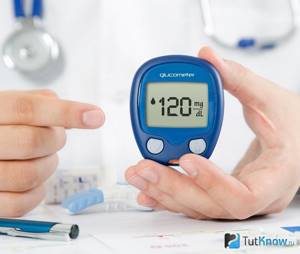
Unfortunately, not everyone can appreciate the unique beneficial properties of oregano. Some people should not use the seasoning. Among those for whom spice is contraindicated:
- Pregnant women
. We said above that oregano is extremely beneficial for women’s health, but it also has pronounced abortifacient properties, and therefore is prohibited during pregnancy. - People with bleeding disorders
. If you have diseases for which there is a risk of bleeding, you should avoid using the seasoning. Also, if you are having surgery, you should stop eating the spice a couple of weeks before it. - Diabetics
. Oregano can lead to a sharp drop in blood sugar, and therefore the use of the seasoning is strictly dosed - you can add it to food, but rarely and in small quantities. - Allergy sufferers
. The spice is contraindicated in case of individual intolerance to the components. The likelihood of an allergic reaction to oregano is high if you are allergic to basil, mint, sage, marjoram, or lavender.
Almost all seasonings are contraindicated for people with serious heart and gastrointestinal diseases. Depending on the specific case, the list of prohibited spices may also include oregano.
Use in cosmetology
Oregano is widely used not only in the medicinal and culinary industries, but also in cosmetology.
For hair
It is recommended to rinse your hair with a decoction after washing . Preparation instructions: mix boiling water (one glass) and herbs (two tablespoons), boil for a couple of minutes, strain thoroughly. It is recommended to add oregano tinctures and oils to hair masks.
For itching
A tablespoon of dry herb is brewed per liter of boiling water. The resulting drug should be wiped over the affected areas of the body.
For skin - recipe for alcohol tincture
To prepare an alcohol tincture, you will need fresh, finely chopped leaves of the plant (one tablespoon) and alcohol (one hundred ml). After mixing the ingredients, place in a dark place for a week. Then the resulting drug must be carefully decanted and diluted 1:1 with chilled boiled water.
To strengthen curls
For infusion you will need:
- one hundred grams of dry grass;
- two hundred and fifty grams of alcohol.
The drug is infused for two weeks, then filtered and applied by rubbing into the scalp without rinsing.
Decoction:
- oregano (two tablespoons);
- boiling water (two hundred and fifty ml).
The ingredients are mixed, boiled for fifteen minutes, and infused for about an hour. Then the mixture is filtered and applied to the hair as a rinse.
For warts
It is recommended to purchase organic oregano oil at the pharmacy. It should be mixed with another oil (for example, olive) or cream. The resulting product must be used to treat the wart several times a day.
For wrinkles
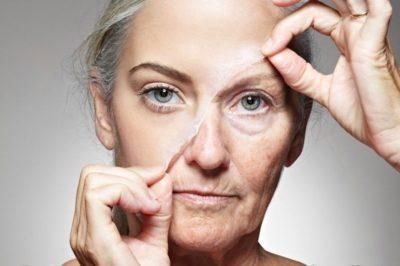
- pharmaceutical camomile;
- parsley leaf;
- dill leaf;
- calendula flowers;
- pink petals;
- oregano;
- two glasses of boiling water.
Mix the ingredients and leave for an hour. Then strain, apply the slightly squeezed mixture onto your face in a thick layer, cover with a cloth soaked in the broth, and leave for forty minutes.
For weight loss
Thanks to its properties, incense improves the functioning of the gastrointestinal tract and nervous system, which helps reduce excess weight. Also, the use of oregano essential oil is very effective in combating cellulite.
Are there any benefits and how to use them?
How to use oregano to lose weight:
- three times a day, take a tablespoon of fresh herb juice inside;
- decoction - pour boiling water over some dry plant and leave;
- add a little oregano to the tea;
- cook dishes with the addition of oregano.
If you follow the simple rules of proper nutrition, there are benefits from oregano for weight loss.
Beneficial properties of dried oregano
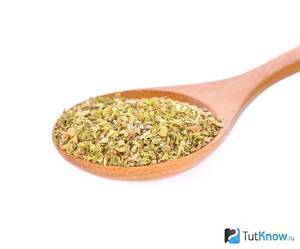
The spice is recognized as a medicinal component even today. Recently, British scientists discovered that oregano is rich in a substance called carvacrol, which has a strong antifungal and antibacterial effect. This means that oregano is able to resist various infections and actively fight parasites. The spice also contains thymol, so it can be used as an antiseptic and analgesic. Let's look at the benefits of dried oregano. Among the positive effects on the body:
- Improving women's health
. Regular consumption of oregano can restore the menstrual cycle and make it less painful. The spice also has a beneficial effect on the smooth muscles of the uterus. The spice helps in the fight against early menopause by stimulating the ovaries. If menopause has already occurred, oregano allows you to cope with its unpleasant symptoms - hot flashes, sweating, depression. - Normalization of the digestive system
. The spice improves digestion: enhances intestinal motility, stimulates appetite, helps fight gastrointestinal disorders of one kind or another, and is especially effective in eliminating flatulence and constipation. - Cleansing the body of waste and toxins
. This beneficial effect is explained by the presence of so-called tannins in the spice. - Combating increased excitability
. Oregano helps men cope with excessive sexual activity and erotomania. It should be noted that the spice only reduces excessive sexual activity without affecting normal healthy potency. - Positive effect on the nervous system
. The spice has a calming effect and acts as a sleeping pill with a mild effect. Pediatricians often prescribe oregano for sleep problems in children. - Prevention of infectious diseases
. Vitamin C and other “immune” components contained in the spice strengthen the immune system, and the aforementioned carvacrol can kill the infection at an early stage of infection. Thus, the use of oregano is absolutely necessary during the cold and flu season. American scientists have proven that the spice can be more effective than many antibiotics and is merciless even against Staphylococcus aureus, which is resistant to all types of antibiotics. - Combating early aging and tumor development
. The spice contains a high level of antioxidants, which helps slow down the aging process and prevents abnormal cell division and, accordingly, prevents the formation and growth of benign and malignant tumors. - Prevention of the development of inflammatory processes
. Oregano contains beta-caryophyllene and rosmarinic acid, substances that have a powerful anti-inflammatory effect. They are effective not only in the development of serious diseases of various types - atherosclerosis, arthritis, psoriasis, but also help simply eliminate pain in overtrained muscles. - Normalization of metabolic processes
. The spice stimulates the flow of bile, thereby accelerating the metabolic process, and ensures healthy metabolism, rapid fat burning, and healthy cholesterol levels. - Strengthening the heart muscle and blood vessels
. Oregano helps reduce the level of triglycerides, which, when accumulated, settle on the walls of blood vessels, causing thrombosis. In addition, the spice normalizes blood pressure.
The benefits of oregano or dried oregano for the body are truly enormous, but you need to understand that the manifestation of beneficial effects is fully achieved only with regular use of the seasoning in food.
How can you replace oregano in cooking and medicine?
- In cooking, oregano seasoning can be replaced with basil or herbs de Provence.
- For medical purposes, perhaps, there is no longer such a universal remedy.
- Wormwood, nettle, chamomile, mint, calendula, and yarrow will help the female body.
- For problems with the gastrointestinal tract, you can use lemon balm, rosemary, peppermint, dill and parsley.
- For colds and respiratory diseases, coltsfoot, plantain, licorice and marshmallow root, rose hips, and echinacea will help.
A long time ago, when all kinds of medicines had not yet been invented, people were treated with the help of herbs. Intelligent nature has created a rich source of health and beauty for humans. However, plants should be used with caution, be sure to study its effect on the body and possible side effects. Oregano, discussed above, is simply a storehouse of vitamins and nutrients. You can grow and collect a herbal first aid kit yourself, or you can purchase the necessary herbs at the pharmacy.
If you find an error, please select a piece of text and press Ctrl+Enter.
Composition and calorie content of oregano
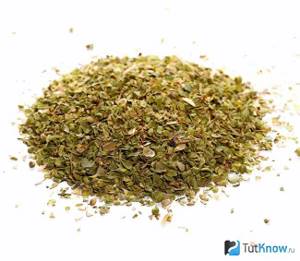
Oregano is used not only as a spice, but is also actively used in herbal medicine. This is due to the rich content of useful biologically active substances in the spice.
The calorie content of dried oregano is 265 kcal per 100 g of product, of which:
- Proteins - 9 g;
- Fats - 4.28 g;
- Carbohydrates - 68.92 g;
- Dietary fiber - 42.5 g;
- Water - 9.93 g;
- Ash - 7.87 g.
Macroelements per 100 g:
- Potassium - 1260 mg;
- Calcium - 1597 mg;
- Magnesium - 270 mg;
- Sodium - 25 mg;
- Phosphorus - 148 mg.
Microelements per 100 g:
- Iron - 36.8 mg;
- Manganese - 4.99 mg;
- Copper - 633 mcg;
- Selenium - 4.5 mcg;
- Zinc - 2.69 mg.
Vitamins per 100 g:
- Vitamin A, RE - 85 mcg;
- Alpha carotene - 20 mcg;
- Beta carotene - 1.007 mg;
- Beta cryptoxanthin - 7 mcg;
- Lutein + Zeaxanthin - 1895 mcg;
- Vitamin B1 - 0.177 mg;
- Vitamin B2 - 0.528 mg;
- Vitamin B4 - 32.3 mg;
- Vitamin B5 - 0.921 mg;
- Vitamin B6 - 1.044 mg;
- Vitamin B9 - 237 mcg;
- Vitamin C - 2.3 mg;
- Vitamin E - 18.26 mg;
- Vitamin K - 621.7 mcg;
- Vitamin RR, NE - 4.64 mg;
- Betaine - 9.8 mg.
Essential amino acids per 100 g:
- Arginine - 0.449 g;
- Valine - 0.585 g;
- Histidine - 0.144 g;
- Isoleucine - 0.441 g;
- Leucine - 0.78 g;
- Lysine - 0.5 g;
- Methionine - 0.127 g;
- Threonine - 0.322 g;
- Tryptophan - 0.203 g;
- Phenylalanine - 0.449 g.
Fatty acids per 100 g:
- Omega-3 - 0.621 g;
- Omega-6 - 0.748 g;
- Saturated - 1.551 g;
- Monounsaturated - 0.716 g;
- Polyunsaturated - 1.369 g.
Oregano also contains digestible carbohydrates in the form of mono- and disaccharides (sugars) - 100 grams contain 4.09 g.
